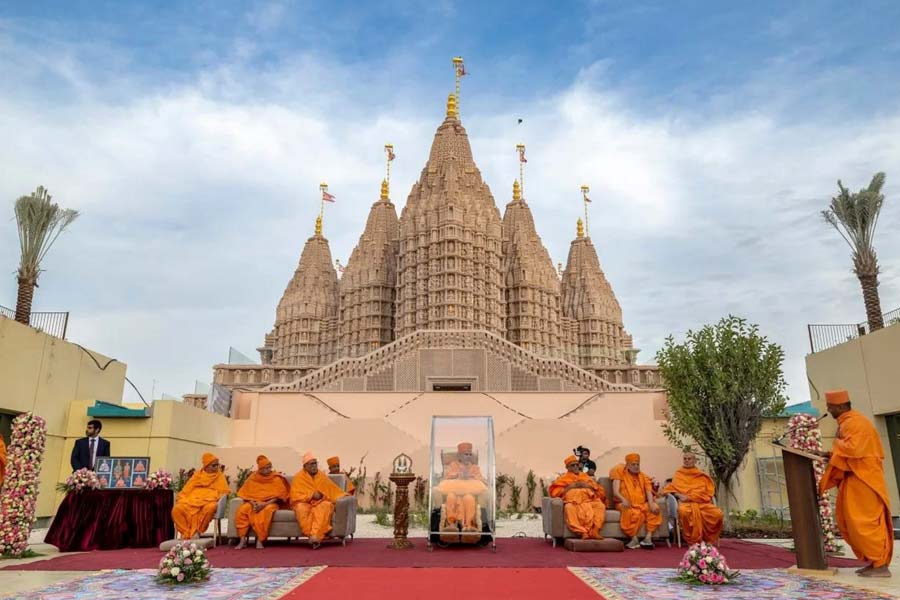The first Hindu stone temple in Abu Dhabi, which will be inaugurated on Wednesday by Prime Minister Narendra Modi, has been built using ancient architectural methods clubbed with scientific techniques.
The BAPS Hindu Mandir has been built with over 300 high-tech sensors to measure temperature and monitor seismic activity, no metal has been used in the construction of the temple and fly ash has been used to fill up the foundation.
The grand temple has been built by the BAPS Swaminarayan Sanstha on a 27-acre site in Abu Mreikhah, near Al Rahba off the Dubai-Abu Dhabi Sheikh Zayed Highway, at a cost of around Rs 700 crore.
According to temple authorities, the grand temple has been built as per an ancient style of construction and creation mentioned in the Shilpa and Sthapathya Shastras, Hindu scriptures which describe the art for mandir design and construction.
"The architectural methods have been clubbed with scientific techniques here. Over 300 high-tech sensors have been installed at every level of the temple to measure temperature, pressure and movement (seismic activity). The sensors will provide live data for research. If there is any earthquake in the region, the temple will detect it, and we will be able to study," Swami Brahmaviharidas, head of international relations for BAPS, told PTI.
No metal has been used in the construction of the temple and fly ash has been used to fill up the foundation, replacing 55 per cent of cement in the concrete mix, reducing the carbon footprint of the temple.
Madhusudan Patel, the temple's construction manager told PTI, "We have used heat-resistant nano tiles and heavy glass panels, merging both traditional aesthetic stone structures with modern-day functionality. Considering the extreme temperatures in UAE, the tiles will be comfortable for visitors to walk even in hot weather. Non-ferrous material has also been used in the temple." Eighteen lakh bricks, seven lakh man hours and 1.8 lakh cubic metres of sandstone directly from Rajasthan — Abu Dhabi's first Hindu temple has been made in the Nagara style of architecture, just like the recently inaugurated Ram Temple in Ayodhya.
According to Umesh Raja, a volunteer at the temple, 20,000 tonnes of sandstone pieces were carved in Rajasthan and then shipped to Abu Dhabi in 700 containers.
"Not just the stone, many labourers who helped construct the temple over five years belong to Gujarat and Rajasthan. Even the marble mined from Italy was first shipped to India for carving and then back to the UAE to be used in the interiors," he said, adding that 18 lakh bricks have been used in the construction of the temple.
The work for the structure has been going on since 2019. The land for the temple was donated by the UAE government The UAE has three other Hindu temples that are located in Dubai. The BAPS temple, spread over a large area with stone architecture, will be the largest of all in the Gulf region.
Prime Minister Modi is in the UAE on a two-day visit, his seventh visit to the UAE since 2015 and his third in the last eight months.
Except for the headline, this story has not been edited by The Telegraph Online staff and has been published from a syndicated feed.










